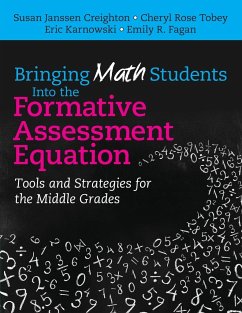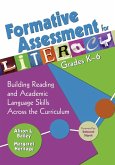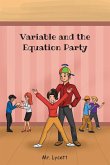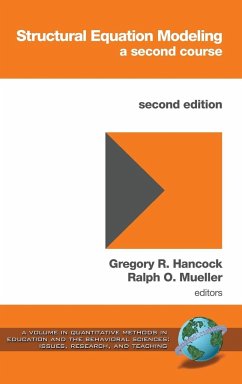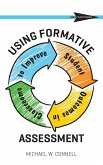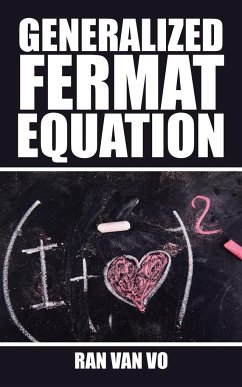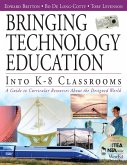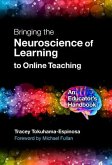Susan Janssen Creighton, Cheryl Rose Tobey, Eric Karnowski
Bringing Math Students Into the Formative Assessment Equation
Tools and Strategies for the Middle Grades
Susan Janssen Creighton, Cheryl Rose Tobey, Eric Karnowski
Bringing Math Students Into the Formative Assessment Equation
Tools and Strategies for the Middle Grades
- Broschiertes Buch
- Merkliste
- Auf die Merkliste
- Bewerten Bewerten
- Teilen
- Produkt teilen
- Produkterinnerung
- Produkterinnerung
Make formative assessment work for you-and your math students! Finally, formative assessment that adds up! This research-based, teacher-tested guide, written specifically for middle school mathematics teachers, will help you teach more effectively and turn your students into self-regulated learners. As you implement instructional strategies, your students will start monitoring, assessing, and communicating about their own progress. Features include: A clear and manageable six-aspect instructional model Detailed strategies for helping students own their successes Real-life examples from middle…mehr
Andere Kunden interessierten sich auch für
![Formative Assessment for Literacy, Grades K-6 Formative Assessment for Literacy, Grades K-6]() Alison L. Bailey Ed. D .Formative Assessment for Literacy, Grades K-639,99 €
Alison L. Bailey Ed. D .Formative Assessment for Literacy, Grades K-639,99 €![Variable and the Equation Party Variable and the Equation Party]() LycettVariable and the Equation Party17,99 €
LycettVariable and the Equation Party17,99 €![Structural Equation Modeling Structural Equation Modeling]() Structural Equation Modeling163,99 €
Structural Equation Modeling163,99 €![Using Formative Assessment to Improve Student Outcomes in the Classroom Using Formative Assessment to Improve Student Outcomes in the Classroom]() Michael W ConnellUsing Formative Assessment to Improve Student Outcomes in the Classroom19,99 €
Michael W ConnellUsing Formative Assessment to Improve Student Outcomes in the Classroom19,99 €![Generalized Fermat Equation Generalized Fermat Equation]() Ran van VoGeneralized Fermat Equation27,99 €
Ran van VoGeneralized Fermat Equation27,99 €![Bringing Technology Education Into K-8 Classrooms Bringing Technology Education Into K-8 Classrooms]() Edward BrittonBringing Technology Education Into K-8 Classrooms47,99 €
Edward BrittonBringing Technology Education Into K-8 Classrooms47,99 €![Bringing the Neuroscience of Learning to Online Teaching Bringing the Neuroscience of Learning to Online Teaching]() Tracey Tokuhama-EspinosaBringing the Neuroscience of Learning to Online Teaching121,99 €
Tracey Tokuhama-EspinosaBringing the Neuroscience of Learning to Online Teaching121,99 €-
-
-
Make formative assessment work for you-and your math students! Finally, formative assessment that adds up! This research-based, teacher-tested guide, written specifically for middle school mathematics teachers, will help you teach more effectively and turn your students into self-regulated learners. As you implement instructional strategies, your students will start monitoring, assessing, and communicating about their own progress. Features include: A clear and manageable six-aspect instructional model Detailed strategies for helping students own their successes Real-life examples from middle school mathematics teachers Useful resources and a companion website to help you implement formative assessment in your classroom
Hinweis: Dieser Artikel kann nur an eine deutsche Lieferadresse ausgeliefert werden.
Hinweis: Dieser Artikel kann nur an eine deutsche Lieferadresse ausgeliefert werden.
Produktdetails
- Produktdetails
- Verlag: Corwin
- Seitenzahl: 314
- Erscheinungstermin: 22. Januar 2015
- Englisch
- Abmessung: 280mm x 216mm x 17mm
- Gewicht: 794g
- ISBN-13: 9781483350103
- ISBN-10: 148335010X
- Artikelnr.: 41371831
- Herstellerkennzeichnung
- Libri GmbH
- Europaallee 1
- 36244 Bad Hersfeld
- gpsr@libri.de
- Verlag: Corwin
- Seitenzahl: 314
- Erscheinungstermin: 22. Januar 2015
- Englisch
- Abmessung: 280mm x 216mm x 17mm
- Gewicht: 794g
- ISBN-13: 9781483350103
- ISBN-10: 148335010X
- Artikelnr.: 41371831
- Herstellerkennzeichnung
- Libri GmbH
- Europaallee 1
- 36244 Bad Hersfeld
- gpsr@libri.de
Susan Janssen Creighton is a senior mathematics associate at Education Development Center (EDC) in Massachusetts. She has worked in mathematics education for 30 years, both in schools and at EDC, where her work has focused largely on K-12 mathematics curriculum development and mathematics teacher professional development. Currently, her work focuses on helping mathematics teachers adopt and successfully implement formative assessment practices, and on supporting teachers' understanding and use of the CCSS Standards for Mathematical Practice. As a member of the NSF-funded project, Formative Assessment in Mathematics Classrooms: Engaging Teachers and Students (FACETS), she was a lead facilitator for several of the participating districts. Creighton has written print and online materials for numerous clients, including the international Department of Defense schools, the Columbus, Ohio public schools, the National Board of Professional Teaching Standards, Everyday Learning publishers, the PBS TeacherLine project, the Massachusetts Dept. of Education, and the E-Learning for Educators project funded by the U.S. Dept. of Education. She has also served as the director of the MathScape Curriculum Center, a national center that supported the implementation of the NSF-funded mathematics curriculum MathScape developed at EDC, for which she was also one of the writers, and has led numerous teacher professional development opportunities for middle and high school teachers on the teaching and learning of mathematics. Prior to coming to EDC, she taught middle school and high school mathematics for a number of years in Portland and Saco, Maine and in Brookline, Massachusetts. She received a B.A. mathematics and a M.Ed. in Secondary Education, with a concentration in curriculum, both from the University of New Hampshire. She currently lives in western Massachusetts with her husband, her two teenagers, and the world's softest dog.
Chapter 1: Using Formative Assessment to Build Student Engagement in Mathematics Learning Being a Self-Regulating Learner Using Formative Assessment Practices to Develop Self-Regulation Skills Using Formative Assessment in Your Classroom Teaching Students How to Participate in Formative Assessment How to Use this Book to Learn What You Want to Learn Conclusion Resources Chapter 2: Using Mathematics Learning Intentions and Success Criteria What Are Learning Intentions and Success Criteria? Creating Learning Intentions and Success Criteria for Your Classroom Conclusion Resources Chapter 3: Gathering, Interpreting, and Acting on Evidence What Is Evidence? Using Evidence in Your Classroom: The Teacher
s Role The Student
s Role and How You Can Develop and Support It Conclusion Resources Chapter 4: Providing and Using Formative Feedback What Is Formative Feedback? Using Formative Feedback in Your Classroom Conclusion Resources Chapter 5: Developing Student Ownership and Involvement in Your Students Student Ownership and Involvement What Do Students Need to Learn? Helping Students Develop Ownership and Involvement in Their Mathematics Learning Self-Regulation: It
s Not a Linear Process Conclusion Resources Chapter 6: Using Mathematics Learning Progressions What Is a Learning Progression? How Can You Use Learning Progressions in Your Instruction? Using Learning Progressions to Help Develop Student Ownership and Involvement Conclusion Resources Chapter 7: Establishing a Classroom Environment Elements of the Classroom Environment The Social and Cultural Environment: Promoting Intellectual Safety and Curiosity The Instructional Environment: Framing Instruction to Encourage and Make Visible Students
Thinking and to Optimize Learning The Physical Environment: Keeping Resources Available Conclusion Resources Chapter 8: Moving Toward Implementation Implementation Principles for Formative Assessment Sustaining Your Effort Over the Long Term Conclusion: Final Words of Encouragement Resources Appendix A: Resources Appendix B: Implementation Indicators for Formative Assessment
s Role The Student
s Role and How You Can Develop and Support It Conclusion Resources Chapter 4: Providing and Using Formative Feedback What Is Formative Feedback? Using Formative Feedback in Your Classroom Conclusion Resources Chapter 5: Developing Student Ownership and Involvement in Your Students Student Ownership and Involvement What Do Students Need to Learn? Helping Students Develop Ownership and Involvement in Their Mathematics Learning Self-Regulation: It
s Not a Linear Process Conclusion Resources Chapter 6: Using Mathematics Learning Progressions What Is a Learning Progression? How Can You Use Learning Progressions in Your Instruction? Using Learning Progressions to Help Develop Student Ownership and Involvement Conclusion Resources Chapter 7: Establishing a Classroom Environment Elements of the Classroom Environment The Social and Cultural Environment: Promoting Intellectual Safety and Curiosity The Instructional Environment: Framing Instruction to Encourage and Make Visible Students
Thinking and to Optimize Learning The Physical Environment: Keeping Resources Available Conclusion Resources Chapter 8: Moving Toward Implementation Implementation Principles for Formative Assessment Sustaining Your Effort Over the Long Term Conclusion: Final Words of Encouragement Resources Appendix A: Resources Appendix B: Implementation Indicators for Formative Assessment
Chapter 1: Using Formative Assessment to Build Student Engagement in Mathematics Learning Being a Self-Regulating Learner Using Formative Assessment Practices to Develop Self-Regulation Skills Using Formative Assessment in Your Classroom Teaching Students How to Participate in Formative Assessment How to Use this Book to Learn What You Want to Learn Conclusion Resources Chapter 2: Using Mathematics Learning Intentions and Success Criteria What Are Learning Intentions and Success Criteria? Creating Learning Intentions and Success Criteria for Your Classroom Conclusion Resources Chapter 3: Gathering, Interpreting, and Acting on Evidence What Is Evidence? Using Evidence in Your Classroom: The Teacher
s Role The Student
s Role and How You Can Develop and Support It Conclusion Resources Chapter 4: Providing and Using Formative Feedback What Is Formative Feedback? Using Formative Feedback in Your Classroom Conclusion Resources Chapter 5: Developing Student Ownership and Involvement in Your Students Student Ownership and Involvement What Do Students Need to Learn? Helping Students Develop Ownership and Involvement in Their Mathematics Learning Self-Regulation: It
s Not a Linear Process Conclusion Resources Chapter 6: Using Mathematics Learning Progressions What Is a Learning Progression? How Can You Use Learning Progressions in Your Instruction? Using Learning Progressions to Help Develop Student Ownership and Involvement Conclusion Resources Chapter 7: Establishing a Classroom Environment Elements of the Classroom Environment The Social and Cultural Environment: Promoting Intellectual Safety and Curiosity The Instructional Environment: Framing Instruction to Encourage and Make Visible Students
Thinking and to Optimize Learning The Physical Environment: Keeping Resources Available Conclusion Resources Chapter 8: Moving Toward Implementation Implementation Principles for Formative Assessment Sustaining Your Effort Over the Long Term Conclusion: Final Words of Encouragement Resources Appendix A: Resources Appendix B: Implementation Indicators for Formative Assessment
s Role The Student
s Role and How You Can Develop and Support It Conclusion Resources Chapter 4: Providing and Using Formative Feedback What Is Formative Feedback? Using Formative Feedback in Your Classroom Conclusion Resources Chapter 5: Developing Student Ownership and Involvement in Your Students Student Ownership and Involvement What Do Students Need to Learn? Helping Students Develop Ownership and Involvement in Their Mathematics Learning Self-Regulation: It
s Not a Linear Process Conclusion Resources Chapter 6: Using Mathematics Learning Progressions What Is a Learning Progression? How Can You Use Learning Progressions in Your Instruction? Using Learning Progressions to Help Develop Student Ownership and Involvement Conclusion Resources Chapter 7: Establishing a Classroom Environment Elements of the Classroom Environment The Social and Cultural Environment: Promoting Intellectual Safety and Curiosity The Instructional Environment: Framing Instruction to Encourage and Make Visible Students
Thinking and to Optimize Learning The Physical Environment: Keeping Resources Available Conclusion Resources Chapter 8: Moving Toward Implementation Implementation Principles for Formative Assessment Sustaining Your Effort Over the Long Term Conclusion: Final Words of Encouragement Resources Appendix A: Resources Appendix B: Implementation Indicators for Formative Assessment

